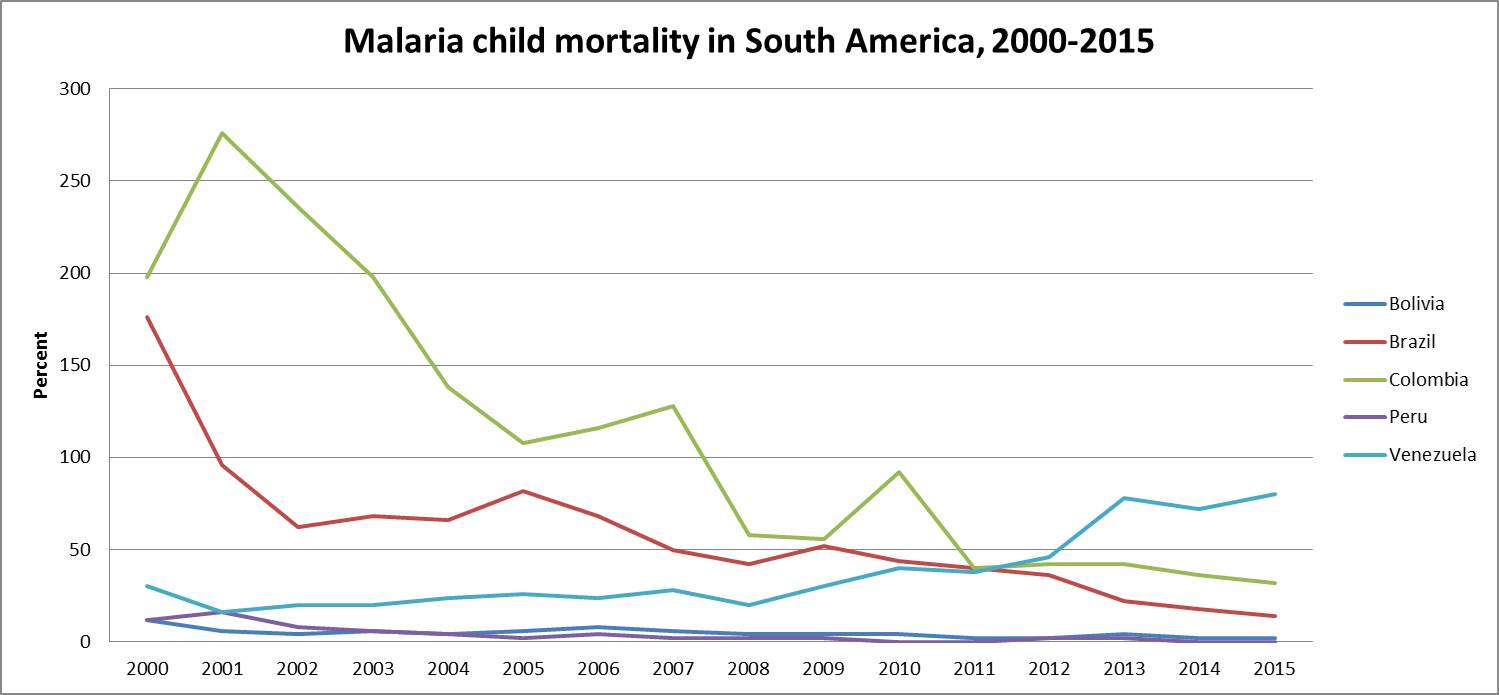Poster Presentation First Malaria World Congress 2018
Malaria child mortality in South America 2000-2015 (#282)
 Efforts to improve child survival can be effective only if they are based on reasonably accurate information about the causes of childhood deaths. The aim of the present work is to make an epidemiological analysis of infant mortality by malaria in the countries of South America
Efforts to improve child survival can be effective only if they are based on reasonably accurate information about the causes of childhood deaths. The aim of the present work is to make an epidemiological analysis of infant mortality by malaria in the countries of South America
To analyze the current situation in Peru compared with The rest of South America, we created a chart using World Health Organization data on cases of malaria death and Malaria child mortality, analyzing the incidences by year. A linear trend graph is created by countries and by year showing the percentage of infant mortality, children under four years or less.
In South America (excluding Guyana, Suriname, and French Guyana), five countries (Argentina,Chile, Ecuador Paraguay and Uruguay) they have not presented cases of infant mortality due to malaria.
There is a decrease in the percentages of countries such as Peru, Brazil, Colombia and Bolivia. Venezuela is the only country that is not managing to control infant mortality by Malaria.
This information on the percentage of infant mortality from malaria should give priority in these countries to improve the intervention and determine their effectiveness.
Although Peru is an endemic country and its incidence has not been reduced, it is the only country that has managed to reduce cases of child mortality due to malaria.
Multidisciplinary strategies for the control of malaria must be continued, from hygiene education for the community and better access to medication to the creation of vaccines to interrupt the spread of malaria.